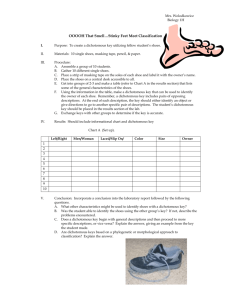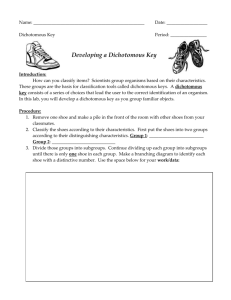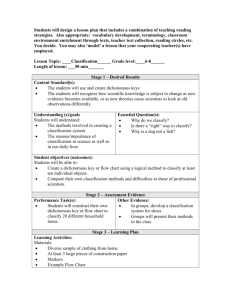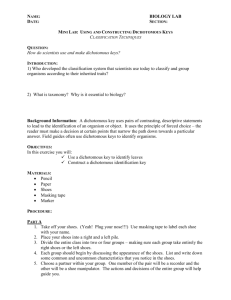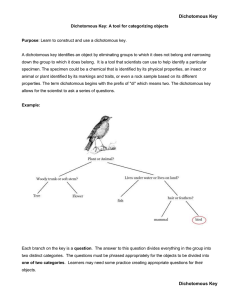Differentiation Instructional Project Virginia Vastag
advertisement
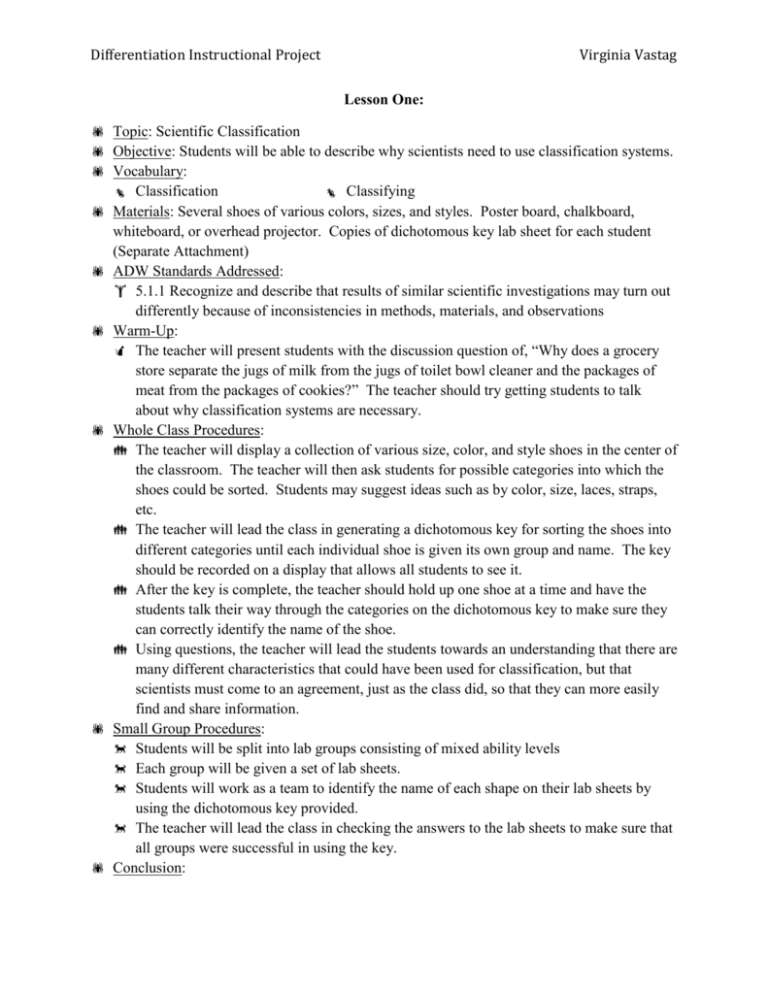
Differentiation Instructional Project Virginia Vastag Lesson One: Topic: Scientific Classification Objective: Students will be able to describe why scientists need to use classification systems. Vocabulary: Classification Classifying Materials: Several shoes of various colors, sizes, and styles. Poster board, chalkboard, whiteboard, or overhead projector. Copies of dichotomous key lab sheet for each student (Separate Attachment) ADW Standards Addressed: 5.1.1 Recognize and describe that results of similar scientific investigations may turn out differently because of inconsistencies in methods, materials, and observations Warm-Up: The teacher will present students with the discussion question of, “Why does a grocery store separate the jugs of milk from the jugs of toilet bowl cleaner and the packages of meat from the packages of cookies?” The teacher should try getting students to talk about why classification systems are necessary. Whole Class Procedures: The teacher will display a collection of various size, color, and style shoes in the center of the classroom. The teacher will then ask students for possible categories into which the shoes could be sorted. Students may suggest ideas such as by color, size, laces, straps, etc. The teacher will lead the class in generating a dichotomous key for sorting the shoes into different categories until each individual shoe is given its own group and name. The key should be recorded on a display that allows all students to see it. After the key is complete, the teacher should hold up one shoe at a time and have the students talk their way through the categories on the dichotomous key to make sure they can correctly identify the name of the shoe. Using questions, the teacher will lead the students towards an understanding that there are many different characteristics that could have been used for classification, but that scientists must come to an agreement, just as the class did, so that they can more easily find and share information. Small Group Procedures: Students will be split into lab groups consisting of mixed ability levels Each group will be given a set of lab sheets. Students will work as a team to identify the name of each shape on their lab sheets by using the dichotomous key provided. The teacher will lead the class in checking the answers to the lab sheets to make sure that all groups were successful in using the key. Conclusion: Differentiation Instructional Project Virginia Vastag As a prelude to the next lesson, the teacher should ask if students can think of specific examples of times when scientists have made classification charts or organized information into groups (ex: living things, elements in the periodic table, types of energy, etc.) Study Guides for the chapter will be passed out upon completion of the first lesson. They should be collected and graded about three days prior to final test. Assessments: Participation log & lab sheets Special Needs Interventions/Accommodations/Modifications: Teacher proximity should be used to help students with ADD or ADHD maintain focus Students with dysgraphia can be partnered up with a writing buddy for completing the lab sheet Lab groupings should be planned with the needs of individual students taken into account. Mixed academic and social ability levels should be placed together. The teacher can use information gathered from student observations to gauge the individual readiness of students to understand classification systems. Some students may require additional support from the teacher.

